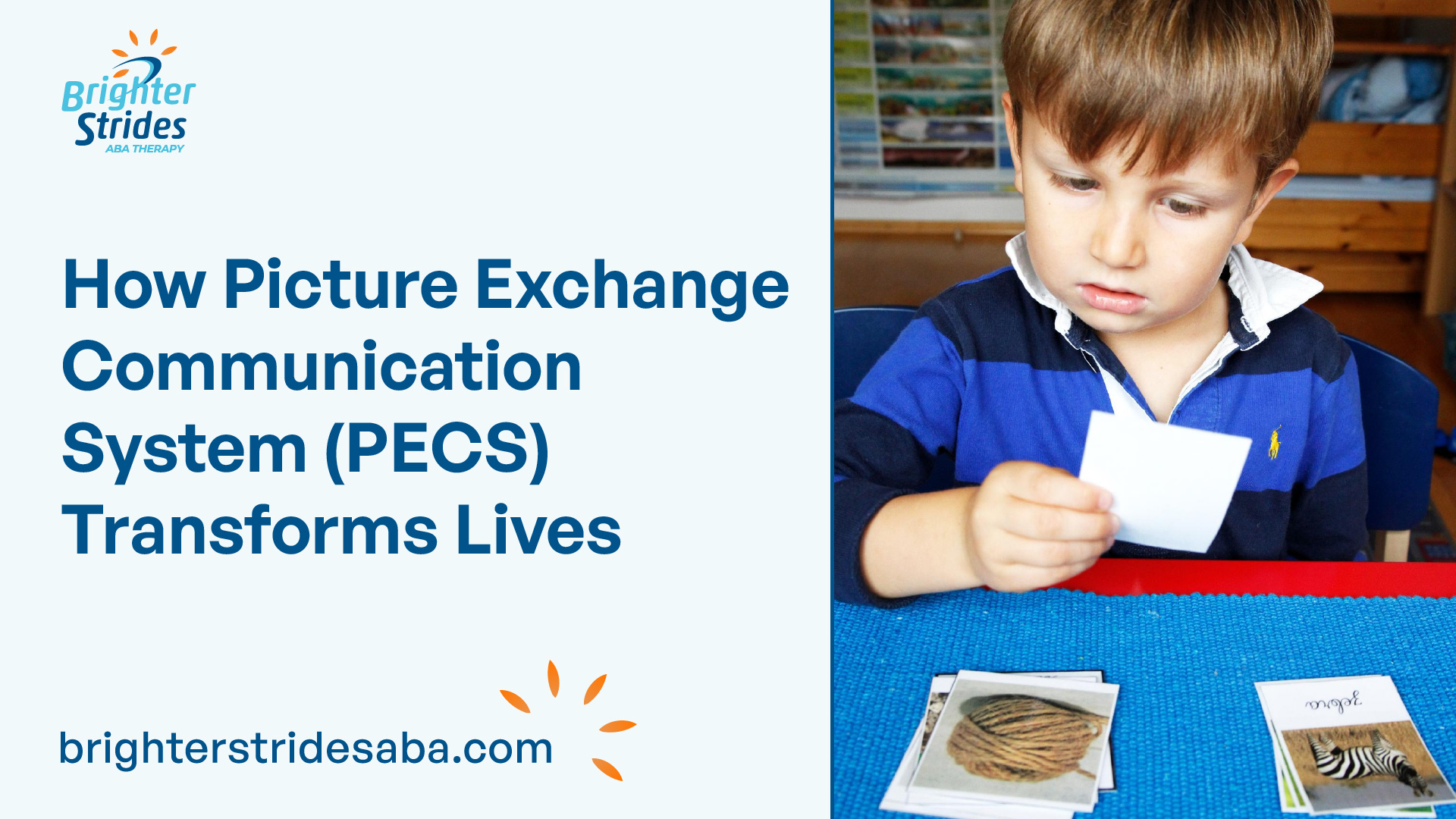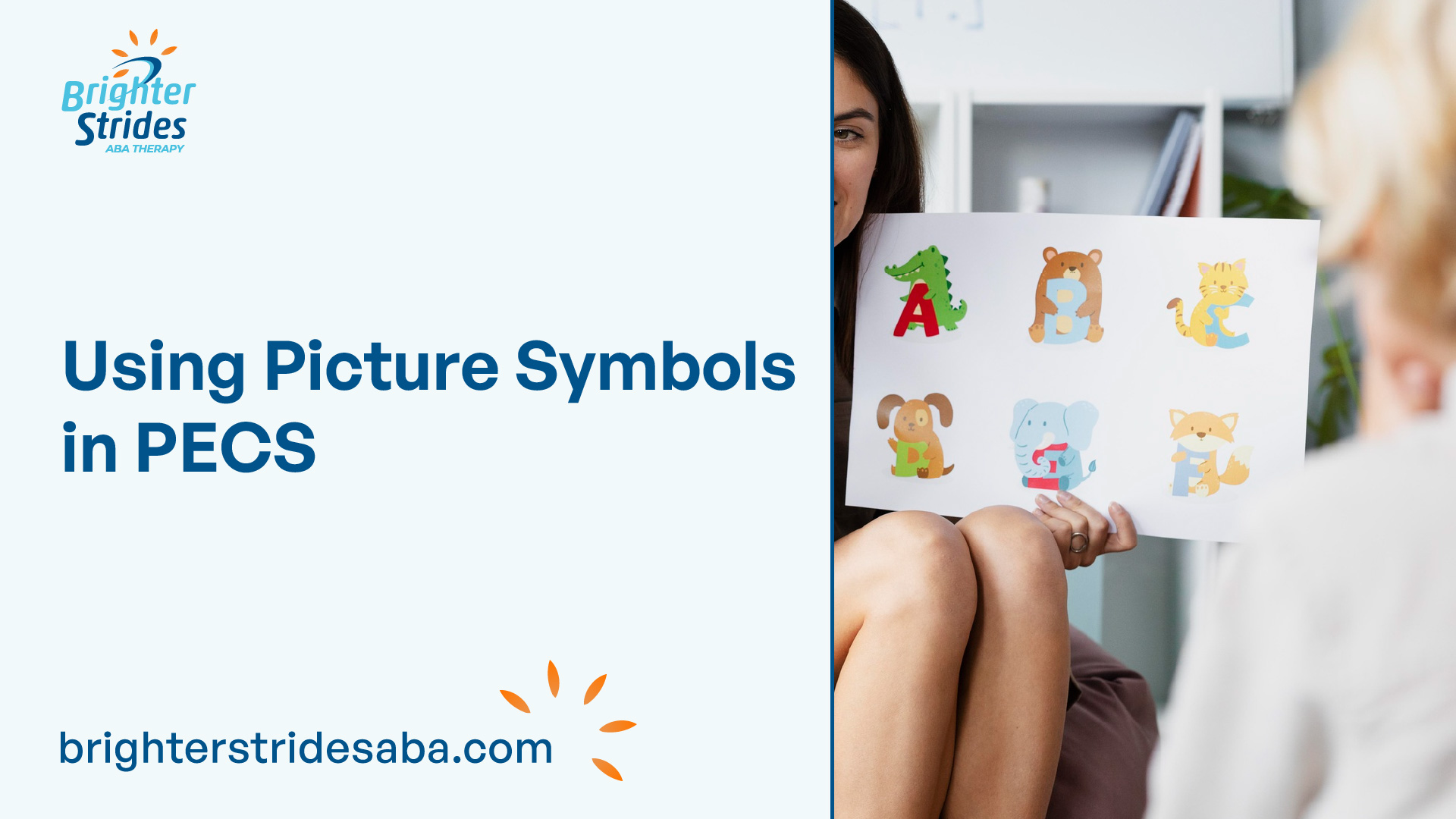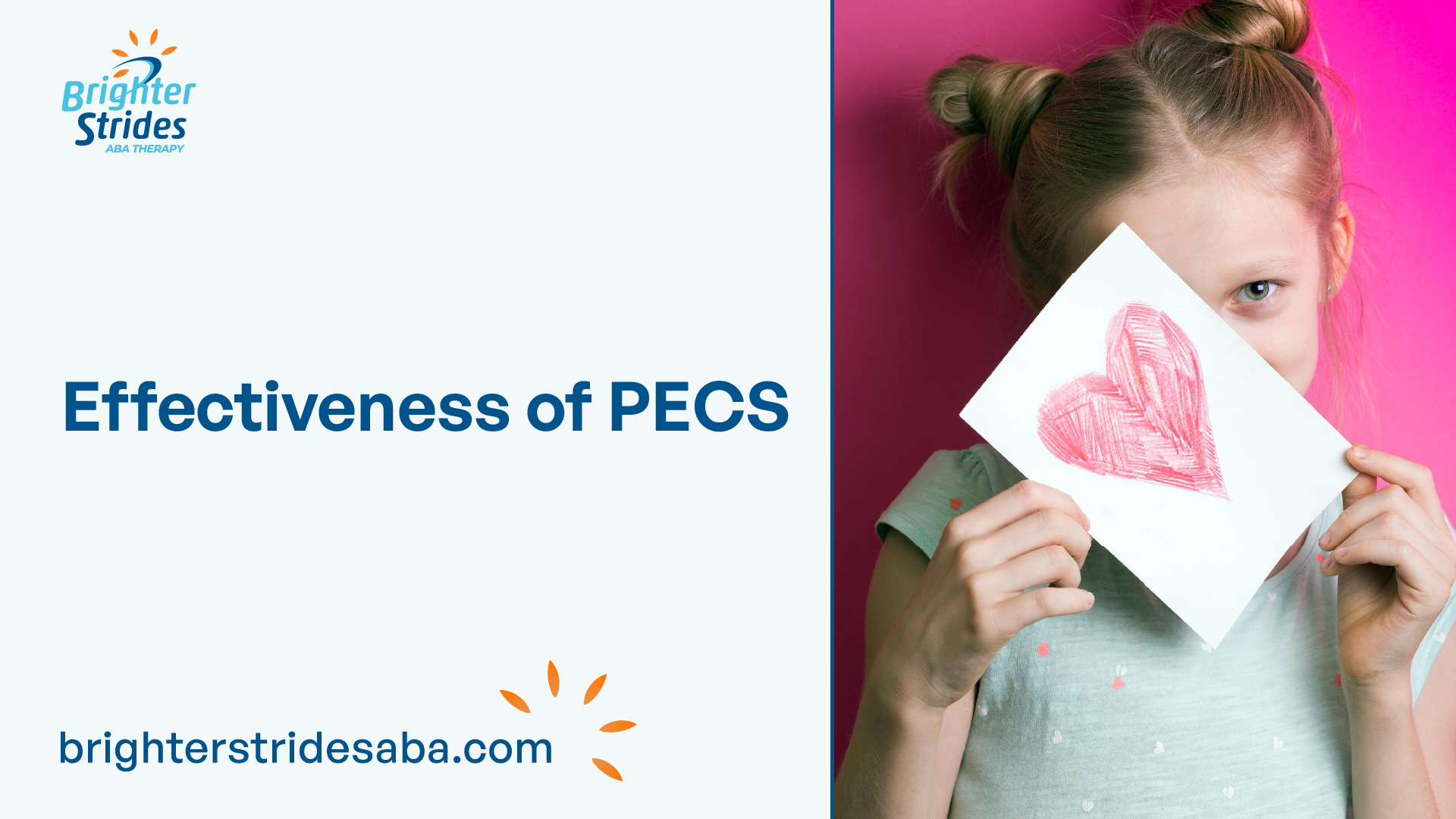
Introduction to PECS
The Picture Exchange Communication System (PECS) is a communication method that utilizes pictures or symbols to help individuals with limited or no verbal communication skills express themselves effectively. Developed by Lori Frost and Andy Bondy in 1985, PECS is particularly beneficial for individuals with autism who struggle with speech.
What is PECS?
PECS is a structured system that enables individuals to initiate communication by using pictures or symbols on a series of cards. Through PECS, individuals can convey their needs, wants, feelings, and more to others. This system provides an alternative means of communication for individuals who face challenges in expressing themselves verbally.
The core principle of PECS revolves around exchanging a picture or symbol for a desired item or activity. For example, a child using PECS may hand a picture of a cookie to a communication partner in exchange for the cookie itself. This exchange helps to build and develop communication skills gradually, providing individuals with a way to communicate effectively.
Benefits of PECS
PECS offers several important benefits for individuals with communication difficulties. By using picture symbols, PECS allows individuals to initiate communication, make choices, and develop the ability to ask questions. This system promotes language development and can significantly enhance social interaction and overall quality of life for individuals with communication challenges [2].
Furthermore, PECS can be tailored to suit the specific needs and abilities of each individual. It can be introduced by professionals such as speech pathologists, occupational therapists, psychologists, or teachers who work closely with the individual. The customization aspect of PECS ensures that it can be adapted to the individual’s unique circumstances and communication goals.
In the following sections, we will explore the implementation of PECS, the use of picture symbols, teaching techniques, the effectiveness of PECS supported by research and success stories, as well as considerations for implementing PECS for different age groups and adapting it to individual needs.
Implementing PECS
Implementing the Picture Exchange Communication System (PECS) involves following a specific set of phases and working closely with a communication partner. Let’s explore these aspects in detail.
The Phases of PECS
PECS training consists of several phases that gradually build upon each other, teaching functional communication skills rapidly. The phases include:
- Phase 1: Teaching the Request: In this initial phase, individuals are taught to spontaneously request desired items by exchanging a picture with a communication partner. The partner immediately honors the exchange as a request. This phase focuses on motivating individuals to communicate and understand the cause-and-effect relationship between communication and their environment.
- Phase 2: Discrimination of Pictures: Once individuals have mastered requesting, they move on to discriminating between different pictures. They learn to select the correct picture representing their desired item from an array of pictures. This phase helps individuals develop the ability to make choices and communicate preferences.
- Phase 3: Sentence Structure: Building upon the previous phases, individuals learn to construct simple sentences using picture symbols. They combine different pictures to form sentences that convey more complex messages. This phase promotes the development of sentence structure and expands communication abilities.
- Advanced Phases: In the more advanced phases, individuals learn to respond to questions and comment using the PECS system. These phases further enhance their communication skills and enable them to engage in more interactive and meaningful exchanges [3].
It’s important to note that following the complete PECS protocol is crucial for effective implementation, which may take several months to years to complete. While some adaptations may be made based on individual needs, it is essential to adhere to the protocol, especially in the initial stages, to ensure successful communication training for individuals with autism spectrum disorders [4].
Working with a Communication Partner
Collaboration with a communication partner is an integral part of PECS implementation. The communication partner can be a parent, teacher, therapist, or any individual involved in the individual’s daily life. Here are key considerations for working effectively with a communication partner:
- Consistency: The communication partner should consistently use the PECS system and follow the established routines and procedures. This helps provide a structured and predictable communication environment.
- Prompting and Reinforcement: The communication partner should provide prompts and reinforcement during the learning process. Prompts can include verbal or physical cues to assist the individual in selecting the correct picture symbol. Reinforcement, such as praise or a preferred item, reinforces successful communication attempts.
- Responsiveness: The communication partner should respond promptly and positively to the individual’s communication attempts. This encourages further engagement and motivates the individual to continue using the PECS system.
- Modeling: The communication partner can model appropriate language and sentence structure using picture symbols. This helps reinforce the learning process and provides examples for the individual to follow.
By working closely with a communication partner and following the established phases of PECS, individuals with autism spectrum disorders can develop functional communication skills and enhance their ability to interact with their environment.
Remember, PECS can be used with individuals of all ages and can be adapted to meet individual needs. It focuses on teaching language functionally and promotes initiation of communication, without requiring complex or expensive materials [3].

Using Picture Symbols in PECS
In the Picture Exchange Communication System (PECS), picture symbols play a vital role in facilitating expressive communication for individuals who struggle with verbal communication. Different types of picture symbols can be used to represent various concepts, words, and actions, making communication more understandable and accessible. It is essential to select and customize picture symbols based on individual needs and abilities.
Types of Picture Symbols
PECS utilizes various types of symbols to support communication. These symbols can include:
- Photographs: Real-life photographs of objects, people, or activities can be used as picture symbols. Photographs provide a concrete representation and can be particularly helpful for individuals who benefit from visual cues.
- Line Drawings: Colored or black and white line drawings are commonly used as picture symbols in PECS. These drawings can represent objects, actions, or concepts in a simplified and easily recognizable form.
- Tangible Symbols: Tangible symbols are physical objects that represent specific items or actions. They can be particularly useful for individuals who benefit from a more hands-on approach to communication.
The selection of the appropriate picture symbol type depends on the individual’s preferences, comprehension abilities, and communication goals. It is important to consider the individual’s familiarity and understanding of each symbol type to ensure effective communication.
Selecting and Customizing Picture Symbols
When implementing picture communication systems like PECS, it is crucial to select and customize picture symbols based on the individual’s specific needs and goals. The use of picture symbols that exactly represent activities can make communicative messages more understandable. However, some individuals may find it challenging to communicate with pictures and identify symbolic representations. In such cases, guidance from an experienced Speech-Language Pathologist (SLP) can be invaluable for proper implementation.
Customization of picture symbols can be done to enhance their effectiveness. This may include personalizing symbols to match the individual’s environment, preferences, or specific vocabulary needs. Additionally, symbols can be laminated or stored in a portable communication book for easy access and organization.
While PECS does not require the use of specific picture symbol sets, some commonly used symbols include Mayer-Johnson picture symbols. However, the selection of picture representation type and size should be based on the individual’s needs and should prioritize their comprehension and ease of use.
By utilizing appropriate and customized picture symbols, individuals can effectively communicate their needs, wants, feelings, and more to others. The use of visual supports and personalized symbols in PECS can promote literacy, support learning, and aid individuals with Autism Spectrum Disorder (ASD) or other communication challenges in developing their communication skills.
Teaching Communication with PECS
The Picture Exchange Communication System (PECS) is a structured and evidence-based program that aims to teach individuals with communication challenges how to effectively communicate their wants and needs. This section will explore two key aspects of teaching communication with PECS: teaching the exchange and promoting sentence structure.
Teaching the Exchange
PECS training begins by teaching individuals to initiate spontaneous communicative interactions through the exchange of a picture for a desired item or action. This initial phase focuses on teaching the individual to give a picture of the desired item to a “communicative partner” who immediately honors the exchange as a request.
The process involves carefully selecting and customizing picture symbols that represent the desired items or actions. These symbols can be photographs, line drawings, or even objects. The individual is taught to approach the communication partner, hand them the picture symbol, and receive the requested item or action in return.
Consistency and repetition are key during this phase. With practice, individuals gradually learn to initiate and engage in communication by using the picture exchange process. This foundational skill sets the stage for further development in communication.
Promoting Sentence Structure
As individuals progress through the phases of PECS, they are taught to go beyond simple requests and develop more complex communication skills, including the ability to construct sentences. The system aims to teach discrimination of pictures and how to put them together in sentences.
In the later phases of PECS, individuals are taught to respond to questions and comment on their environment. The goal is to expand their communication abilities and provide them with the tools to express themselves effectively.
During this phase, individuals learn to combine picture symbols to form meaningful sentences. They are encouraged to use the picture symbols to express their thoughts, preferences, and experiences. The communication partner plays a crucial role in supporting and reinforcing these sentence structures.
By teaching the exchange and promoting sentence structure, PECS empowers individuals with communication challenges to express themselves, make choices, and engage in meaningful interactions. The structured and sequential nature of PECS provides a clear framework for learning, allowing individuals to progress at their own pace and build upon their communication skills.
Through the use of PECS, individuals with communication difficulties can develop a foundation for effective communication, which may indirectly support the development of speech. PECS training typically occurs during natural activities within familiar settings such as the classroom and home, promoting generalization of skills to real-life situations.

Effectiveness of PECS
The Picture Exchange Communication System (PECS) has garnered significant attention and recognition for its effectiveness in improving communication skills among individuals with communication challenges. Research and evidence support the efficacy of PECS as a valuable communication intervention.
Research and Evidence
PECS has been widely studied and implemented across educational settings, homes, and clinical environments. Its effectiveness is supported by multiple peer-reviewed studies and systematic research reviews [6]. Some key findings include:
- Improvements in communication: Research shows that PECS not only helps establish functional communication but also contributes to the development of social interaction and context-relevant language for individuals using the system [7]. It has been found to increase spontaneous initiations, communicative functions, and reduce disruptive behaviors.
- Expanded vocabulary and sentence length: PECS has proven beneficial in increasing vocabulary and sentence length among individuals who use the system. It helps individuals express themselves more effectively and develop their language skills.
- Social communication improvements: PECS has also been shown to enhance social communication skills, promoting meaningful interactions and connections with others [6].
The effectiveness of PECS as a communication intervention is further supported by its recognition as an evidence-based practice. Organizations such as the National Professional Development Center on Autism Spectrum Disorders (NPDC) and the National Standards Project recommend the use of PECS.
Success Stories
Numerous success stories highlight the transformative impact of PECS on individuals with communication challenges. Personal accounts and testimonials from parents, educators, and therapists demonstrate the positive outcomes achieved through the implementation of PECS. These success stories showcase how PECS has empowered individuals to express their needs, desires, and thoughts effectively, leading to improved overall communication and quality of life.
By incorporating PECS into their lives, individuals with autism, significant language delays, intellectual disabilities, and other developmental disabilities have experienced significant progress in their communication abilities. These success stories serve as a testament to the power of PECS in breaking communication barriers and enhancing the lives of individuals with communication challenges.
The research and success stories surrounding PECS collectively emphasize its efficacy as a communication intervention. By implementing PECS, individuals with communication challenges can develop vital communication skills, engage in meaningful interactions, and enhance their overall communication abilities.
Considerations for PECS Implementation
When considering the implementation of the Picture Exchange Communication System (PECS), it’s important to take into account various factors such as the age and criteria for its usage, as well as the need for adaptation based on individual requirements.
Age and Criteria for PECS
PECS training is not limited by age, but rather by specific criteria. The candidate should be an intentional communicator, have personal preferences, and while picture discrimination ability is not mandatory, it can be beneficial. PECS can be used with individuals who are nonverbal, echolalic, have unintelligible speech, or limited meaningful words or signs in their repertoire, based on careful consideration of its strengths and weaknesses for each individual.
The flexibility of PECS allows it to be effective for individuals of all ages who have a variety of communicative, cognitive, and physical difficulties. Whether it’s a child in early intervention or an adult with developmental disabilities, PECS can be tailored to meet their communication needs.
Adapting PECS for Individual Needs
One of the strengths of PECS lies in its adaptability to suit individual needs. Each person’s communication abilities and preferences are unique, and PECS can be customized accordingly. Here are a few considerations for adapting PECS:
- Vocabulary Selection: Selecting the appropriate vocabulary for the individual is crucial. It should be based on their specific needs, interests, and functional communication goals. The vocabulary should be relevant to their daily life and encompass a range of core words and specific requests.
- Visual Supports: In addition to the picture symbols used in PECS, visual supports such as schedules, visual cues, and visual reminders can enhance communication and comprehension. These supports can be personalized to the individual’s preferences and help them navigate their environment more effectively.
- Communication Partners: The success of PECS implementation relies on the collaboration between the individual and their communication partners. Communication partners play a vital role in modeling, prompting, and reinforcing the use of PECS. They should receive training and ongoing support to ensure consistency and effectiveness in communication exchanges.
- Progression and Maintenance: As individuals become proficient in using PECS, it’s important to continuously evaluate their progress and adjust the system accordingly. This may involve expanding vocabulary, introducing sentence structure, and supporting generalization of skills to various settings and communication partners.
By considering these factors and personalizing the implementation of PECS, individuals with autism, significant language delays, intellectual disabilities, and other developmental disabilities can benefit from this evidence-based communication intervention. Adapting PECS to meet individual needs can empower individuals to communicate effectively, increase their independence, and enhance their overall quality of life.
Considerations for PECS Implementation
When implementing the Picture Exchange Communication System (PECS), it is important to understand certain considerations to ensure its effectiveness and successful outcomes for individuals with autism spectrum disorders. These considerations include age and criteria for PECS implementation, as well as adapting PECS to individual needs.
Age and Criteria for PECS
PECS training is not limited by age but rather by specific criteria. The focus is on the individual’s ability to be an intentional communicator and have personal preferences, rather than solely on age. The presence of picture discrimination ability is not mandatory for PECS implementation. This means that individuals who are nonverbal, echolalic, have unintelligible speech, or limited meaningful words or signs in their repertoire can benefit from PECS training.
Adapting PECS for Individual Needs
To ensure effective communication training, it is essential to adapt PECS to the specific needs of each individual. PECS utilizes various types of symbols, such as photographs, colored or black and white line drawings, or tangible symbols. The selection of picture representation type and size should be based on individual needs. It is not mandatory to use Mayer-Johnson picture symbols; other symbol systems can be utilized based on the individual’s preferences and abilities.
It’s important to note that following the complete PECS protocol is crucial for effective implementation. The protocol may take several months to years to complete, and while some adaptations may be made, it is essential to follow the protocol, especially in the initial stages, to ensure successful communication training for individuals with autism spectrum disorders.
By considering age, criteria, and individual needs, educators, therapists, and caregivers can tailor their PECS implementation for optimal communication development and growth. Adapting PECS to meet the unique abilities and preferences of individuals with autism spectrum disorders enhances the effectiveness of the program and promotes meaningful and functional communication skills.
References
- https://raisingchildren.net.au/autism/therapies-guide/pecs
- https://childdevelopment.com.au/areas-of-concern/using-speech/picture-exchange-communication-systems-pecs
- https://autismpdc.fpg.unc.edu/sites/autismpdc.fpg.unc.edu/files/PECSimplementationsteps.pdf
- https://iidc.indiana.edu/irca/articles/what-is-the-picture-exchange-communication-system-or-pecs.html
- https://nationalautismresources.com/the-picture-exchange-communication-system-pecs/
- https://asatonline.org/for-parents/becoming-a-savvy-consumer/is-there-science-behind-that-pecs/
- https://childdevelopment.com.au/areas-of-concern/using-speech/picture-exchange-communication-systems-pecs/

 We've just released an article! Check out our blog!
We've just released an article! Check out our blog! 


